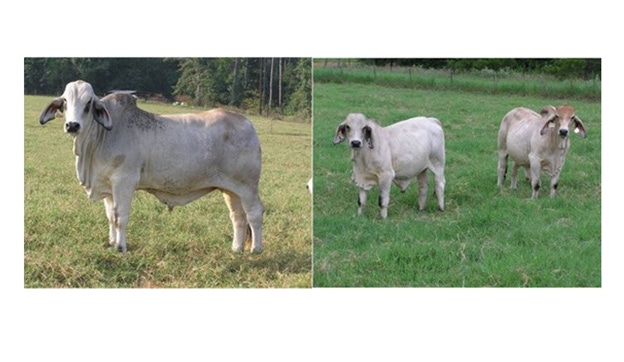Feed efficiency of Brahman steers: from feed to steak
New study explores feed management outcomes in Brahman beef steers.
June 28, 2023

Efficiency of beef cattle production and reproduction has major implications for stakeholders and the sustainability of the beef industry. Availability and nutritive value of pastures and feedstuffs affect economic and biological efficiencies of maintenance, gain and performance. A recent report published in Applied Animal Science focuses this line of inquiry on Brahman steers in the southwestern United States.
Favored in beef production for their environmental adaptability, efficient feed use, and advantageous fertility qualities, among other traits, Brahman cattle represent an important resource as animal agriculture works toward increasing economic and environmental sustainability in challenging times.
"The objectives of this study were to measure feed efficiency data for yearling Brahman bulls and to determine the relationship of these efficiency groupings to growth, feedlot performance, carcass traits, and tenderness of Brahman steers," said lead author Monte Rouquette, PhD, at Texas A&M AgriLife Research in Overton, Texas.
"The relationships of residual feed intake, residual average daily gain, and efficiency (gain:feed) groupings of yearling Brahman bulls with subsequent carcass traits and feedlot growth performance of Brahman steers were evaluated from data collected over three successive years," said David Beede, PhD, editor in chief of Applied Animal Science. "The authors conclude that grouping by residual average daily gain was the best indicator of growth of Brahman bulls and steers. Furthermore, they suggest that as a genetic selection criterion, residual average daily gain rankings of efficiency may be the most appropriate measurement to use for sires."
The researchers found that the most efficient group for residual average daily gain reached harvest earlier than the less efficient groups, as well as having greater weights at harvest. Levels of fat were also greatest for the most efficient residual feed intake group. The authors noted a direct correlation between feed efficiency ratings and tenderness of meat, with the most tender steaks coming from the most efficient groupings.
"The growth rate from yearling to harvest of the most efficient residual average daily gain group has significant economic implications for Brahman bulls-steers," observed Rouquette. The group's findings highlight future directions for efficient, effective management of Brahman cattle, with benefits from the environmental to the economic to the culinary.
You May Also Like


.png?width=300&auto=webp&quality=80&disable=upscale)
